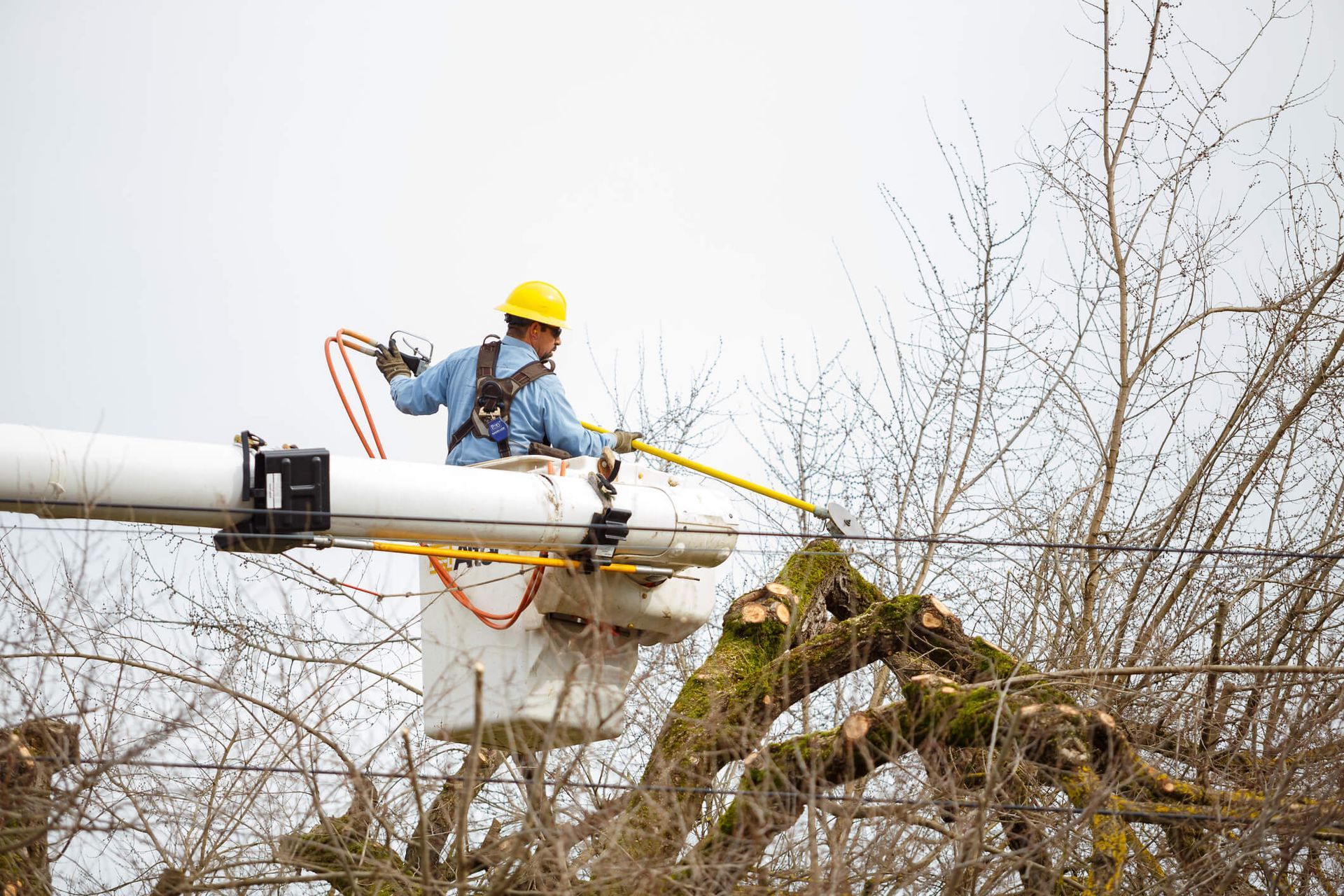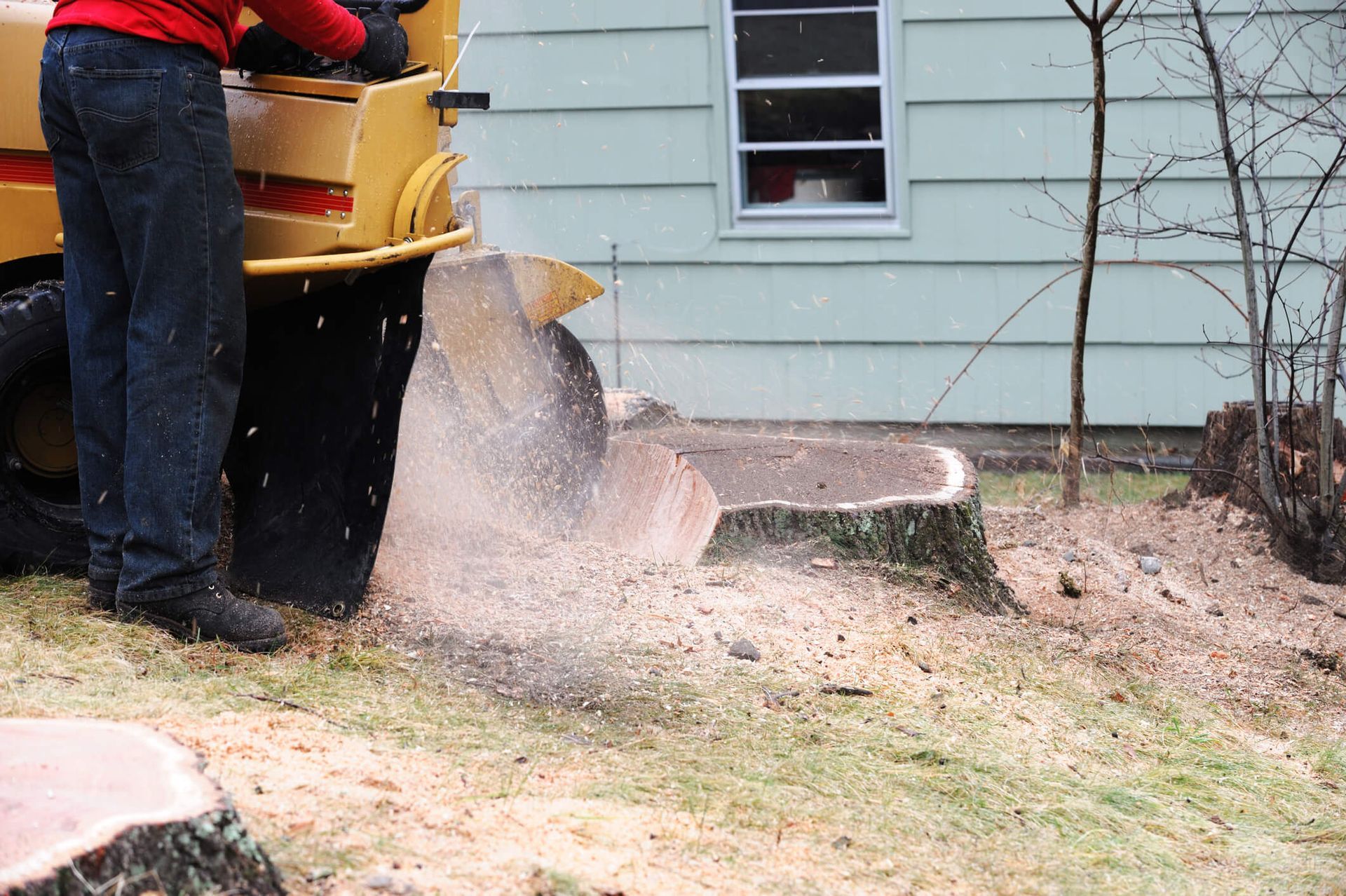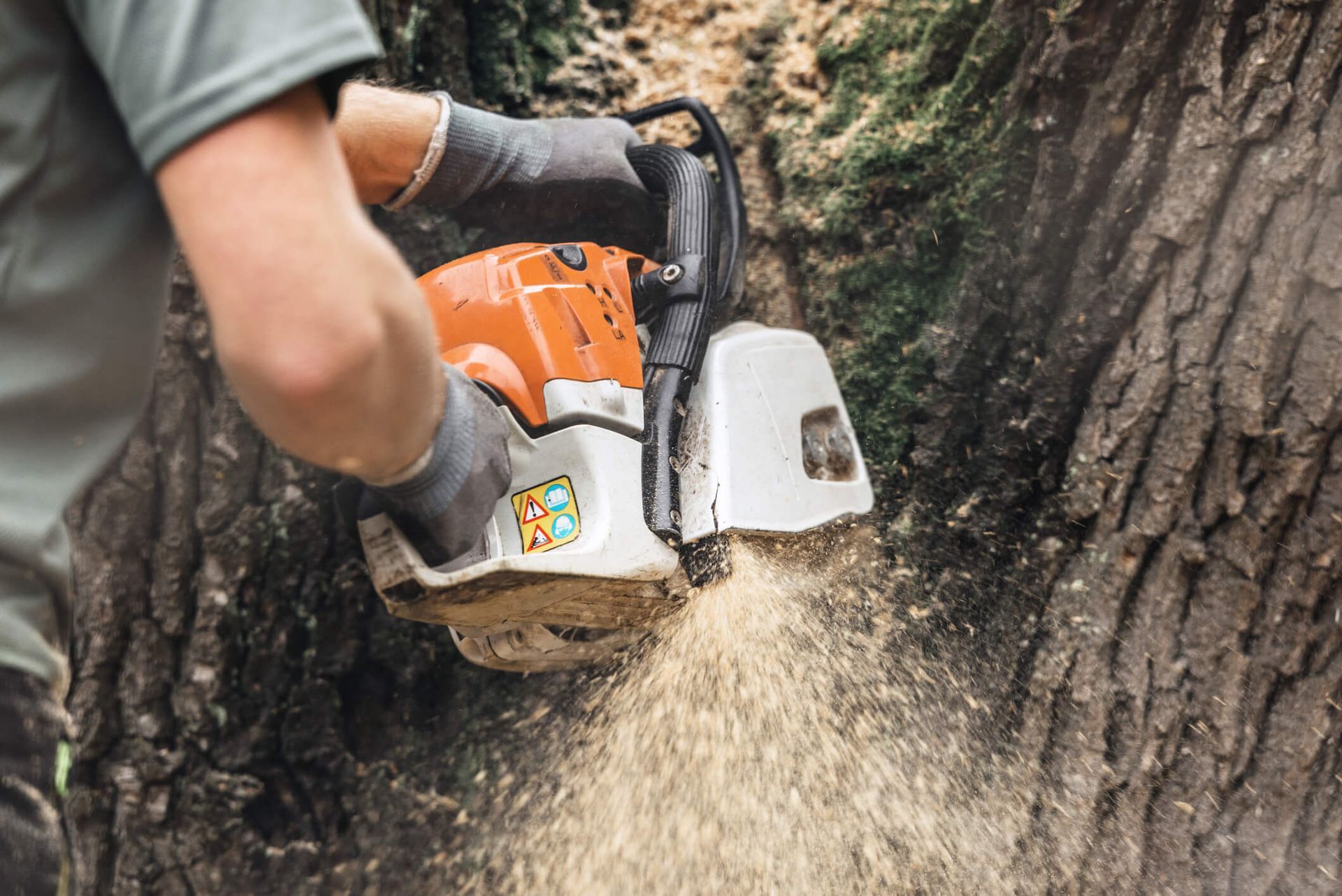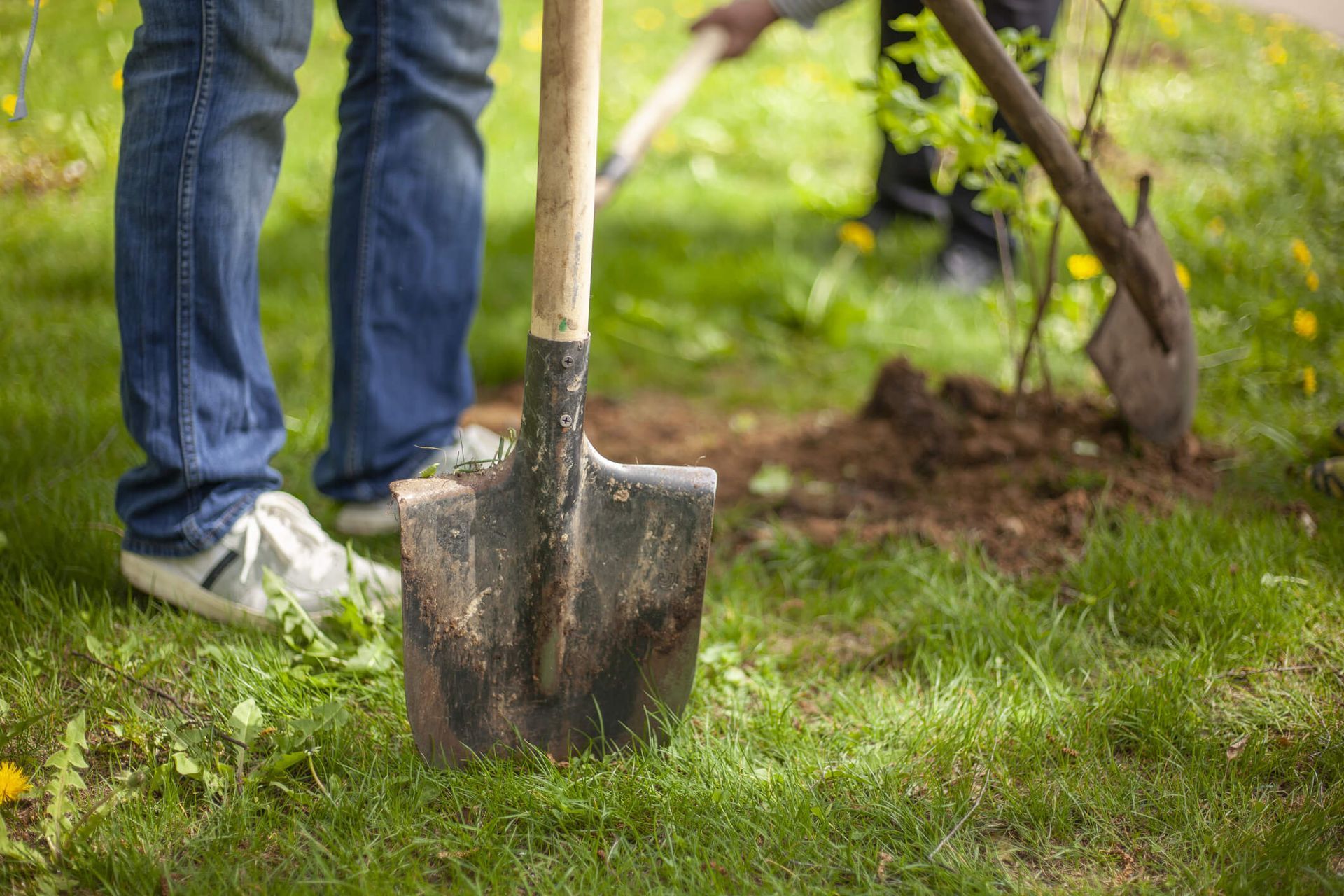What is the Difference Between Tree Trimming and Pruning?
Understanding the difference between tree trimming and tree pruning is essential for properly caring for your trees, shrubs, and hedges. These two processes are vital to tree care, focusing on plant health and growth. At Sys Enterprises, we aim to guide you through these two critical services, ensuring your yard and landscape thrive in appearance and functionality.
In this article, we'll explore tree trimming and pruning, their unique purposes, and their numerous benefits. We'll also discuss the tools, techniques, and best practices to ensure your plants receive optimal care. Whether it's to remove dead branches, cut overgrown foliage, or support plant rejuvenation, understanding these processes can enhance your landscaping efforts and foster healthier trees through sound horticulture practices.
What is Tree Trimming?
Tree trimming is cutting back branches, foliage, and other overgrown parts of a tree or shrub to improve its appearance, shape, and overall health. This practice focuses on maintaining a polished, aesthetically pleasing look while enhancing the plant's growth by allowing better access to sunlight and air circulation. The technique used for trimming involves the same careful approach as pruning but is applied in a different way to achieve its goals. Among the many things addressed during trimming are overgrowth, uneven branches, and damaged areas, which can sometimes obstruct light or air penetration.
Different kinds of tools are used in a precise order to trim specific parts of the tree effectively. This process is an essential part of tree care and contributes significantly to the satisfaction of customers who value a well-maintained yard. For a professional blog or residential landscaping, tree trimming is vital in enhancing outdoor spaces.
Benefits of Tree Trimming:
- Improved Appearance: Regular trimming helps maintain the desired shape and beauty of trees and shrubs, especially for decorative plants like hedges. A well-maintained tree branch can also contribute to a visually appealing yard or logo design.
- Enhanced Growth: Trimming enhances growth by removing overgrowth and excess branches, directing the plant's energy toward healthy growth, and helping trees absorb essential nutrients.
- Safety: Overgrown branches near power lines or buildings pose safety risks. Trimming eliminates these hazards and ensures a safer environment, particularly in areas like Fort Worth, where storms can create additional risks.
- Pest Control: Trimming minimizes the risk of pest infestations by removing unhealthy or dead parts where pests might thrive. A certified arborist can help identify and manage these concerns effectively.
- Professional Assistance: Using a tree trimming service ensures the proper techniques are applied for every type of tree, whether a large oak with a lot of overgrowth or a smaller fruit tree. Professionals often use tools like a saw for precision and safety.
- Accessibility: Many companies offer easy ways to connect with tree care experts. A simple phone call can solve your landscaping needs. Additionally, professional content on company websites often explains services and benefits in detail.
Tools Used for Tree Trimming:
Professional arborists utilize a variety of tools for trimming, including:
- Hand shears and loppers for precise cuts.
- Shears for shaping shrubs and hedges.
- Specialized saws for thicker branches.
These tools, combined with the expertise of certified arborists, ensure your plants are trimmed effectively and safely.
When to Trim Your Trees
The best time to trim trees is during their active growing season, usually in late spring or early summer. Trimming during this period promotes faster healing and prevents unnecessary stress on the plant. However, specific species and conditions may require different timing, so consultation with an expert arborist is crucial. Timing is not the only thing to consider; factors like moisture levels and lawn conditions also play a role in the effectiveness of tree trimming. Relying on professional resources or watching detailed guides on YouTube can provide additional information on the best methods for tree care.
What is Tree Pruning?
Tree pruning focuses on the health and structure of the tree, targeting the removal of deadwood, diseased branches, and structurally weak limbs. Unlike trimming, pruning has a more strategic role in ensuring trees' long-term health and safety. This process is not just about cutting—it involves assessing details like branch angles, growth patterns, and moisture levels. Consulting with one experienced person or undergoing specialized training can provide the skills necessary for precise pruning. Pruning methods vary widely, and another key element is understanding the unique needs of each tree species from a holistic view to maintain their health and beauty.

Key Goals of Tree Pruning:
- Disease Prevention: Removing diseased or dying parts prevents the spread of diseases to healthy areas of the tree and nearby plants.
- Encourages Flowering and Fruit Production: Pruning stimulates the growth of buds on fruit-bearing trees, resulting in more abundant fruit production.
- Improves Structural Integrity: Pruning strengthens the tree's structure by eliminating weak or crossing branches that may lead to future problems.
- Promotes Safety: By removing hazardous branches, pruning reduces the risk of damage to property and people.
Types of Pruning Techniques
Pruning involves various techniques tailored to the specific needs of the tree, such as:
- Thinning: Removes excess branches to allow more light and air to penetrate.
- Crown Reduction: Reduces the height or spread of a tree for safety or aesthetic reasons.
- Deadwood Removal: Focuses on cutting away dead or decaying branches to promote healthier growth.
Tools Used for Tree Pruning
Pruning requires specialized tools such as pruners, saws, and shears, each designed for specific tasks. Proper use of these tools by trained professionals ensures precise cuts that minimize damage to the tree. Whether dealing with delicate branches or thicker limbs, having the right tools makes all the difference. Without the proper equipment, attempting to prune can cause more harm than good, and professionals ensure that anything they use is tailored to the tree's specific needs.
When to Prune Your Trees
Pruning is often performed during the dormant season, typically in late winter, when the tree is not actively growing. This timing reduces the risk of disease transmission and allows the plant to focus its energy on healing. Proper pruning also supports long-term growth and helps maintain the tree's overall health. For effective tree maintenance, it's crucial to follow expert guidance on the best pruning practices to ensure the longevity and safety of your trees.
Key Differences Between Tree Trimming and Pruning
While both practices involve removing tree parts, their purposes, tools, and timing differ significantly. Let's break down the key differences:
Purpose:
Tree trimming focuses on aesthetic appearance and promoting growth.
Pruning emphasizes structural health, safety, and disease prevention.
Tools:
Trimming often involves shears, loppers, and essential tools.
Pruning requires more precise equipment, such as saws and pruners.
Timing:
Trimming is done during the growing season for optimal results.
Pruning is typically conducted during the dormant cycle to reduce stress on the tree.
By understanding these differences, you can decide which service your tree needs at a given time.
Why Tree Maintenance is Essential
Regular tree maintenance, including trimming and pruning, offers numerous benefits for your yard and landscape. Here are some of the reasons to prioritize tree care:
Health and Safety: Removing weak or dead branches prevents accidents and ensures people's and property's safety.
Aesthetics: Well-maintained trees enhance the overall appearance of your garden or landscape.
Longevity: Proper care increases the lifespan of your trees, allowing them to thrive for decades.
Pest Control: By removing unhealthy parts, tree maintenance reduces the likelihood of pest infestations.
Frequently Asked Questions About Tree Care
1. How Often Should I Trim or Prune My Trees?
The frequency depends on the tree's species, growth rate, and condition. Tree trimming is typically done once or twice a year to maintain the appearance and health of your trees, while pruning may be required every 2-3 years for structural and disease management.
2. Can I Trim or Prune Trees Myself?
While minor tasks can be handled with the right tools, such as shears, hand shears, or pruners, hiring certified arborists is highly recommended for larger or more complex jobs. Professionals ensure the work is done safely and with minimal risk to the tree's health.
3. What Happens if I Don't Trim or Prune My Trees?
Neglecting tree maintenance can lead to several issues, including overgrowth, weak branches, and the spread of diseases. Overgrown trees may obstruct sunlight and air circulation, weaken structures, or pose safety risks near power lines.
4. What Tools Are Commonly Used for Tree Maintenance?
Tree care professionals use specialized tools depending on the task, such as shears, saws, loppers, and pruners. These tools ensure precise cuts that enhance the tree's growth and safety.
5. Does Tree Trimming or Pruning Help with Fruit Production?
Yes, especially for fruit trees. Regular pruning removes dead or weak branches and promotes the development of healthy buds, leading to improved fruit production and better nutrient distribution.
6. What's the Difference Between Tree Trimming and Pruning?
Tree trimming focuses on aesthetics and maintaining a polished look by removing overgrowth, while pruning targets health, removing dead or diseased parts to ensure structural integrity. Both are essential aspects of tree care but serve different purposes.
7. When Is the Best Time to Prune or Trim Trees?
Trimming is best performed during the active growing season, usually in late spring or early summer, while pruning is most effective during the dormant season in late winter. However, specific species and conditions may vary.
8. How Do I Know If My Tree Has a Disease?
Signs of tree diseases include:
- Discolored or wilting leaves.
- Cracked bark.
- The presence of pests or insects.
- Slow or stunted growth.
If you notice these symptoms, consult an arborist to assess the condition and recommend treatment.
9. Are Tree Services Expensive?
The cost of tree trimming, pruning, or other tree services depends on the tree size, the job's complexity, and the tools required. While professional services may involve an investment, the benefits to your tree's health, safety, and appearance outweigh the cost.
10. How Can I Find the Right Arborist or Tree Service?
Look for tree care providers with certified arborists, excellent customer reviews, and proven expertise. Ask about their experience, tools, and techniques. Sys Enterprises offers reliable services backed by skilled professionals, ensuring the best care for your trees.
Choosing the Right Tree Care Service
At Sys Enterprises, we offer tree services tailored to your needs. Whether you need routine trimming, precise pruning, or an entire tree health assessment, our team of experts is here to help.
Why Choose Us?
Experienced Professionals: Our team includes certified arborists with years of hands-on experience in tree care.
Comprehensive Services: From removal and maintenance to consultations, we cover all aspects of tree care.
State-of-the-Art Tools: We use the latest equipment and techniques to deliver safe and effective results.
Customer Satisfaction: We prioritize your needs and strive to exceed your expectations on every job.
Contact Us Today
Sys Enterprises is your trusted partner for expert tree trimming and pruning services. Call us, check out our Instagram, or visit our LinkedIn page for inquiries. Let us help you enhance your trees' beauty, health, and safety.


